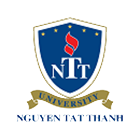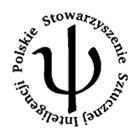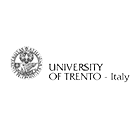Keynotes
Perspectives on US Policies Enabling New Spectrum Access Technologies
Enabling Policies for Successful IoT and 5G Digital Transformation
Towards a "5G-ready" spectrum strategy for Europe
Big Data & User-behavior Based Radio Resource Controlling: A Revenant for 5G?
Flexible Spectrum Usage: an Industry Perspective
Recent Developments in Massively Parallel Cognitive Radio for Modern IoT
Perspectives on US Policies Enabling New Spectrum Access Technologies
Douglas C. Sicker
 Dr. Douglas C. Sicker is currently the Lord Endowed Professor and Department Head and Professor of Engineering and Public Policy with a joint appointment in the School of Computer Science at Carnegie Mellon University. Previously, Doug was an Endowed Professor in the Department of Computer Science at the University of Colorado at Boulder. Doug recently served as the Chief Technology Officer at the National Telecommunications and Information Administration (NTIA) and as the Chief Technology Officer of the Federal Communications Commission (FCC). Earlier he was Director of Global Architecture at Level 3 Communications, Inc. In the late 1990s, Doug served as Chief of the Network Technology Division at the Federal Communications Commission (FCC). Doug has also served on numerous program committees, federal advisory committees and other advisory boards. His research interests include wireless systems, network security and engineering policy.
Dr. Douglas C. Sicker is currently the Lord Endowed Professor and Department Head and Professor of Engineering and Public Policy with a joint appointment in the School of Computer Science at Carnegie Mellon University. Previously, Doug was an Endowed Professor in the Department of Computer Science at the University of Colorado at Boulder. Doug recently served as the Chief Technology Officer at the National Telecommunications and Information Administration (NTIA) and as the Chief Technology Officer of the Federal Communications Commission (FCC). Earlier he was Director of Global Architecture at Level 3 Communications, Inc. In the late 1990s, Doug served as Chief of the Network Technology Division at the Federal Communications Commission (FCC). Doug has also served on numerous program committees, federal advisory committees and other advisory boards. His research interests include wireless systems, network security and engineering policy.
Abstract
Headlines like "Cellular auction nets $44.9 billion for radio spectrum" demonstrate that spectrum is a valuable resource for the cellular industry. However, radio spectrum is also the key component in GPS, broadcast TV, radar, and a whole host of military, scientific and other applications, and the continued growth of these services demands access to additional spectrum. Unfortunately, spectrum (at least spectrum in a useful range of frequencies) is a finite resource and, as the aforementioned revenues suggest, a very valuable resource. Therefore, as our societies become ever more dependent on the use of spectrum, we face the dilemma of how to access this scarce resource. In this talk, I will discuss work in the US in promoting new spectrum policy and technology, specifically cognitive radio technology. The goal of this talk is to consider the role of this new radio technology within the rollout of 5G.
Enabling Policies for Successful IoT and 5G Digital Transformation
Wassim Chourbaji
 Wassim Chourbaji is Vice President for Government Affairs Europe, Middle East and North Africa at Qualcomm. He oversees Qualcomm's public policy and government relations, focusing in particular on the European Union. In this role, he is responsible for the regional team that is in charge of innovation, technology, spectrum, regulatory, intellectual property, standardization, security, antitrust and data protection policy.
Wassim Chourbaji is Vice President for Government Affairs Europe, Middle East and North Africa at Qualcomm. He oversees Qualcomm's public policy and government relations, focusing in particular on the European Union. In this role, he is responsible for the regional team that is in charge of innovation, technology, spectrum, regulatory, intellectual property, standardization, security, antitrust and data protection policy.
Wassim was elected chairman of the Communication Policy Council of TechUK, the policy arm of the UK digital industry, in February 2015. He was previously chairman of the spectrum group at DigitalEurope, the Brussels-based EU industry association, and chairman of the European spectrum group at the GSMA.
Prior to joining Qualcomm in 2006, Wassim was the head of spectrum for the France Telecom Group, overseeing the group's fixed, mobile and satellite spectrum strategy across its operating companies. He was also designated by European administrations as lead coordinator on 4G spectrum for Europe at the ITU World Radio Conference. Previously, he served as regulatory manager for SkyBridge, the Alcatel Space global Internet satellite project. He started his career as a spectrum engineer at French mobile operator Bouygues Telecom.
Wassim is a graduate engineer from Supélec in France and holds a master's degree in wireless communications and signal processing from Paris University.
Abstract
We have seen a tremendous pace of innovation and an exciting surge of mobile and internet connectivity over the past 20 years – smartphones and tablets have taken over the computing wave, with over 3 billion mobile broadband users today. In a sense this is an environment that everybody is already familiar with, but when we discuss digital transformation of industries and economies, with the IoT and 5G, we must necessarily look ahead at what the near digital future holds for us. And this is fundamentally a new environment where tens of billions of objects will get connected to the networks and to each other, with architectures that empower vastly faster wireless communication speeds but most importantly connections that are more secure as they become responsible for more areas of each individual user's. This sort of ground-breaking innovation doesn't just happen: we need public policies to support it. In his keynote, Wassim will share his perspective on four key enabling policies in the European context, namely infrastructure, spectrum, standardization and data security policies.
Towards a "5G-ready" spectrum strategy for Europe
Philippe J. Lefebvre
 Philippe Lefebvre is Head of the 5G Sector in the European Commission's DG CONNECT (Directorate-General for Communications Networks, Content and Technology), responsible for wireless broadband research & innovation policy as well as for the 5G Public Private Partnership, a flagship initiative aimed at supporting EU's competitiveness in the fast evolving telecom sector.
Philippe Lefebvre is Head of the 5G Sector in the European Commission's DG CONNECT (Directorate-General for Communications Networks, Content and Technology), responsible for wireless broadband research & innovation policy as well as for the 5G Public Private Partnership, a flagship initiative aimed at supporting EU's competitiveness in the fast evolving telecom sector.
Before his current oposition, Mr. Lefebvre worked in the EU spectrum policy field where he was in charge of the digital dividend policy and of spectrum policy for terrestrial broadcasting. Mr Lefebvre also worked in several other Commission departments in the field of research and innovation, more particularly regarding electronic commerce and the development of financial technologies.
Prior to joining the European Commission, Philippe Lefebvre held several technical and marketing positions in the banking industry, with the Belgian’s Generale Bank (1983-1986), Eurocard International – now MasterCard Europe - as vice-president Southern Europe (1987-1991), and with Visa International in the US (1992-1995).
Philippe Lefebvre is graduated in electrical & mechanical engineering (MS) from the University of Brussels (ULB) and in economics (MBA) from the same university.
Abstract
Radio spectrum is the "oil" of the digital economy! Like oil, radio spectrum is a finite resource and, like oil, its current use is not very efficient. However, unlike oil, only a small part of the total potential spectrum is actively used today, and mistakes of the past have nor or little effect on the future! In particular, ongoing research in 5G is opening entirely new territories, to exploit millimetre waves, in terms of spectrum sharing, and also in terms of complex aggregation of channel and hybrid access. In that context, are we at an inflection point? Is the current management of spectrum fit for the 5G era? The European Union is reviewing its rules for governing radio spectrum, and is about to propose a landmark spectrum reform as promised in the Juncker Plan. In that context, and for the first time in more than 20 years, the main driving force behind the review of the telecom rules is "technology" rather than principally "competition". The speaker will give a hint on the scenarios under consideration by the European Commission in terms of future spectrum management as well as the ambitious plans to deploy 5G in Europe under more flexible rules.
Big Data & User-behavior Based Radio Resource Controlling: A Revenant for 5G?
Honggang Zhang
 Honggang Zhang is a Full Professor of College of Information Science and Electronic Engineering as well as the Co-Director of York-Zhejiang Lab for Cognitive Radio and Green Communications at the Zhejiang University, China. He was an International Chair Professor, CominLabs Excellence Center, Université Européenne de Bretagne (UEB) & Supélec, France (2012-2014). He is an Honorary Visiting Professor of the University of York, UK. He received the Ph.D. degree in Electrical Engineering from Kagoshima University, Japan, in March 1999. From October 1999 to March 2002, he was with the Telecommunications Advancement Organization (TAO) of Japan, as a TAO Research Fellow. From April 2002 to November 2002, he joined the TOYOTA IT Centre. From December 2002 to August 2004, he has been with the UWB Research Consortium, Communications Research Laboratory (CRL) and National Institute of Information and Communications Technology (NICT) of Japan. He was the principle contributor for proposing DS-UWB in IEEE 802.15 WPAN standardization task group. From September 2004 to February 2008, he has been with CREATE-NET (Italy), where he leaded its wireless team in exploring Cognitive Radio and UWB technologies while participated the European FP6/FP7 projects (EUWB, PULSERS2).
Honggang Zhang is a Full Professor of College of Information Science and Electronic Engineering as well as the Co-Director of York-Zhejiang Lab for Cognitive Radio and Green Communications at the Zhejiang University, China. He was an International Chair Professor, CominLabs Excellence Center, Université Européenne de Bretagne (UEB) & Supélec, France (2012-2014). He is an Honorary Visiting Professor of the University of York, UK. He received the Ph.D. degree in Electrical Engineering from Kagoshima University, Japan, in March 1999. From October 1999 to March 2002, he was with the Telecommunications Advancement Organization (TAO) of Japan, as a TAO Research Fellow. From April 2002 to November 2002, he joined the TOYOTA IT Centre. From December 2002 to August 2004, he has been with the UWB Research Consortium, Communications Research Laboratory (CRL) and National Institute of Information and Communications Technology (NICT) of Japan. He was the principle contributor for proposing DS-UWB in IEEE 802.15 WPAN standardization task group. From September 2004 to February 2008, he has been with CREATE-NET (Italy), where he leaded its wireless team in exploring Cognitive Radio and UWB technologies while participated the European FP6/FP7 projects (EUWB, PULSERS2).
Dr. Honggang Zhang has served as the Chair of the Technical Committee on Cognitive Networks (TCCN) of IEEE Communications Society during 2011-2012. He was the Co-Chair of IEEE Globecom 2008 Symposium and IEEE ICC 2013 Symposium. In the area of cognitive radio and green communications, Dr. Honggang Zhang was the Lead Guest Editor of the first IEEE Communications Magazine feature topic issue on “Green Communications”. He was the founding TPC Co-Chair of CrownCom 2006 and the Steering Committee Member of CrownCom 2006-2009. He was the General Co-Chair of IEEE GreenCom 2010 (2010 IEEE International Conference on Green Computing and Communications), the TPC Co-Chair of IEEE OnlineGreenComm 2014 (The 2014 IEEE Online Conference on Green Communications), and the General Co-Chair of IEEE OnlineGreenComm 2015. He is the Series Editor of IEEE Communications Magazine (Green Communications and Computing Networks Series). He is the co-editor/co-author of two books with the titles of “Cognitive Communications - Distributed Artificial Intelligence (DAI), Regulatory Policy & Economics, Implementation” (Wiley Press) and “Green Communications: Theoretical Fundamentals, Algorithms and Applications” (CRC Press), respectively. He is the AEiC (Associate Editor-in-Chief) of China Communications (co-sponsored by IEEE and China Institute of Communications).
Abstract
For long time, both the academics and engineers in information and telecommunication communities have been pursuing the everlasting aim (“destiny”) of increasing communication capacity, which has always fallen over the “scarce” radio resources at various levels like PHY, MAC and network layer. By diligently digging out more and more radio resources such as spectrum (frequency bands), energy (transmit power), spatial-temporal dimensions, polarization and even channel interference, researchers unremittingly work hard to search and to increase the radio resource (capacity deliverable to users) like a “Sisyphus”. However, they seem to neglect totally one basic fact, i.e., who will really need those capacities (radio resources) and in what kind of way? In other words, we always say that the academics and engineers should design the communication systems for satisfying the users’ demand (needs), but do we really understand the service demands of users as well as their social behaviors, locally and globally?
Starting from these questions, we rethink the long-march of cellular networks evolution (from 2G, 3G, 4G, to 5G), and try to find and to characterize the key deciding force during this kind of long-term evolution. Basically, we look at the dynamics of human sociality and people living-style, especially the users’ social behaviors that generate a huge amount of networking traffic (Big Data) crossing various base stations. Inspired by the intrinsic heavy-tailed characteristics of human activities, such as the ones of burstiness, self-similarity, LRD (long-range-dependence) and even fractality, we re-examine the statistical spatial-temporal distributions of both traffic and base stations in cellular networks. Interestingly, by taking advantage of large amount of realistic deployment information (Big Data) of traffic and base stations from several on-operating cellular networks around the world, we verify that the heavy-tailed distributions could more precisely match the practical datasets. In particular, α-Stable distribution, the statistical distribution also found in traffic pattern of broadband Internet, is most consistent with the practical ones. Moreover, these studies could contribute not only to the understanding of future 5G evolution trend but also to the impact of human social activities in long term.
Flexible Spectrum Usage: an Industry Perspective
Walter Weigel
 Dr. Weigel is since 1st April 2015 VP of the European Research Institute of Huawei, based in Munich Germany.
Dr. Weigel is since 1st April 2015 VP of the European Research Institute of Huawei, based in Munich Germany.
He used to be from September 2006 to July 2011 the Director General of the European Telecommunication Standards Institute ETSI. Between February 1991 and February 2015 he held several positions within Siemens AG, including VP of External Cooperations and Head of Standardization in Corporate Technology, VP of the Research & Concepts-department of the Mobile Networks business unit as well as Head of the business segment Video Processing for the semiconductor business unit (today Infineon).
Dr. Weigel initiated and founded the industry consortium on CPRI (Common Public Radio Interface) together with Ericsson, NEC, Nortel, Siemens and Huawei. He was involved in the set up of several EU FP 7-projects, has published about 50 technical papers and is the initiator and editor of the book “ICT shaping the world”.
He is a lecturer at the Technische Universitaet Muenchen, member of the IEEE Board of Governors, of the Key Enabling Technologies working group of the European Commission, the Innovationsdialog of the German Government and of the Aalborg University Industry Advisory Council.
Abstract
The presentation will shortly elaborate the WRC-15 decisions and their effects on spectrum, have a look at 5G bands in general and their potential use and analyze the importance of below 6 GHz bands.
It will further discuss the question of combining shared and exclusive spectrum, the requirements of Ultra Dense Networks with regards to spectrum sharing and the importance of an “own” band for 5G. Last not least it will discuss about the LSA concept with regards to 5G.
Recent Developments in Massively Parallel Cognitive Radio for Modern IoT
Christophe Fourtet
 Graduated from INSA de Lyon and holds a DEA in electromagnetism, Christophe Fourtet is a long time enthusiast of science and technology, particularly radio and electromagnetism. This passion will take him to work on multiple radio projects in companies such as Thomson, TALCO, SAGEM, MOTOROLA, as a design engineer and as a technical manager. He has been working on topics such as PMR, then pioneering digital PMR as well as digital cellular, and then 3G / LTE. In fact, caught in the 90s as many radio specialists by the wave of cellular and its quest of broadband, he made a 180 degree turn starting to work on more "frugal" and "low footprint" radio systems, combining low power and high performance for a given service.
Graduated from INSA de Lyon and holds a DEA in electromagnetism, Christophe Fourtet is a long time enthusiast of science and technology, particularly radio and electromagnetism. This passion will take him to work on multiple radio projects in companies such as Thomson, TALCO, SAGEM, MOTOROLA, as a design engineer and as a technical manager. He has been working on topics such as PMR, then pioneering digital PMR as well as digital cellular, and then 3G / LTE. In fact, caught in the 90s as many radio specialists by the wave of cellular and its quest of broadband, he made a 180 degree turn starting to work on more "frugal" and "low footprint" radio systems, combining low power and high performance for a given service.
The modern UNB (Ultra Narrow Band) began to be born, and it is his meeting with Ludovic Le Moan, that triggered the spark of SIGFOX five years ago.
Abstract
The low power IoT, which will be the biggest market in IoT, requires a complete change of paradigm in radio infrastructure’s behavior and architecture. It is fundamental for the network to be “at the service” of objects, where classical radio networks impose heavy discipline on devices before any traffic. Additionally, because of required ultra low operation costs, heterogeneous shared spectrum usage will be mandatory.
Consequences of above points is the absolute necessity of using highly cognitive base station’s receivers as far as uplink is concerned, and highly flexible software defined transmitter for the downlinks. Last but not least, because of an obvious requirement for highest capacity as possible, and despite lack of discipline, those processes, or “instantiations” must be massively parallel and particularly sophisticated from signal separation stand point.
This leads to a level of SDR complexity that had never been practiced so far, where every latest technical development, in the domain of high definition A2D/D2A, signal processing architectures, digital platform, distributed computing, for instance, must be seriously considered right at the beginning of the project.














































